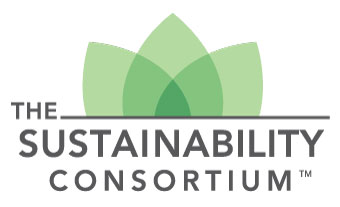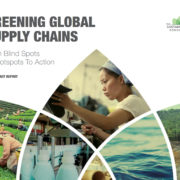EDF + Business | Sustainable Supply Chains: No More Excuses
By: Elizabeth Sturcken | Fri, Apr 22, 2016
A question for forward-thinking business executives: if you could do something that would directly reduce more than 60 percent of all greenhouse gas emissions, 80 percent of water usage, and two-thirds of tropical forest loss globally… wouldn’t you do it?
The answer: yes, of course you would! That’s why you’re forward-thinking!
That’s also why Environmental Defense Fund (EDF) has been working in supply chains (for years) to improve the impacts of the global production and use of consumer goods.
Those impacts are huge. Really getting at them, unfortunately, has not been so easy. The excuse that we’ve heard over and over again boils down to “you can’t manage what you can’t see.” Basically, while most companies’ impacts are in their supply chain, most businesses have very little knowledge of how those supply chains actually function. And, the further up in the chains you go, the less visibility there is.
EDF has a lot of first-hand experience with this: after years of on-the-ground work with farmers, our Ecosystems team knows precisely how difficult it is to capture impacts at the farm level. Despite the on-farm benefits of optimizing fertilizer use in cost savings, reduced greenhouse gases and increased water quality, fewer than 20 % of companies collect this data.

How do I know that statistic? Because The Sustainability Consortium (TSC) has just released Greening Global Supply Chains: From Blind Spots to Hot Spots to Action, their first-ever impact report. It’s full of stunning data about the huge weight that consumer goods place on people and the planet. Since it covers more than 80% of consumer goods product categories, it is the comprehensive way to understand environmental hot spots in global supply chains.
Which means the “no visibility” excuse is now officially over.
What kind of hot spots did they illuminate? Well, just to pick one product, take laundry detergent. From its palm oil origins (tropical deforestation) through ingredient manufacturing (chemical factory emissions, electricity consumption, waste water, and respiratory illnesses in workers), through detergent manufacturing (worker exposure to enzymes), through actual use and disposal of the product (hot water consumption, skin irritations and allergies, biodegradation in waste water, toxicity to aquatic life).
You can follow the same path for chicken, beef, cell phones, sneakers… the list of hotspots and products goes on and on.
But this impact report isn’t a document of doom-and-gloom. It clearly states that the potential for large-scale impact is dramatic. It also points out that there are already sustainability leaders in almost every product category—meaning that it’s not that leadership is hard, but that up until now very few companies have figured out how to do it. It’s up to retailers to send a demand signal down the supply chain, pushing others to follow the leaders’ example. That’s when we’ll see raised performance across the board.
Because the bottom line is this: the drive for supply chain transparency is not going to go away—it is only going to increase. Companies are going to have to understand every node of their supply chains just to survive, let alone thrive. Greening Global Supply Chains shows the immense opportunity in the supply chain—but also how few companies are seizing that opportunity. Finally, it shows the way forward to find the answers and ultimately to drive the results we need as a planet.
TSC’s ultimate goal? To gather comprehensive impact data for $1 trillion of consumer goods, thus setting them on the path towards sustainability.
That’s 1 trillion ways of saying there are no more excuses.
Follow Elizabeth on Twitter: @esturcken






